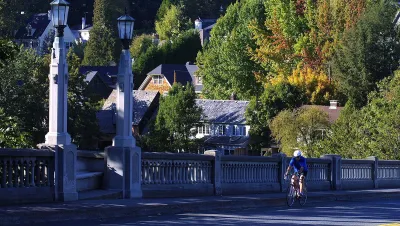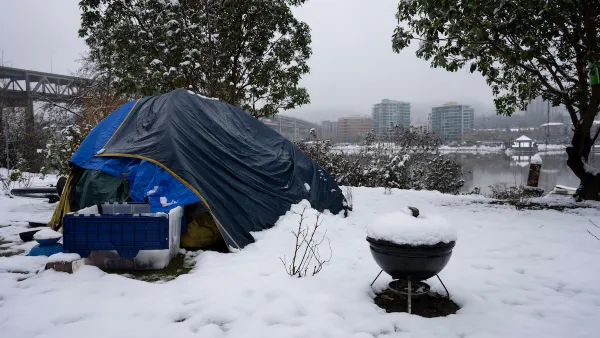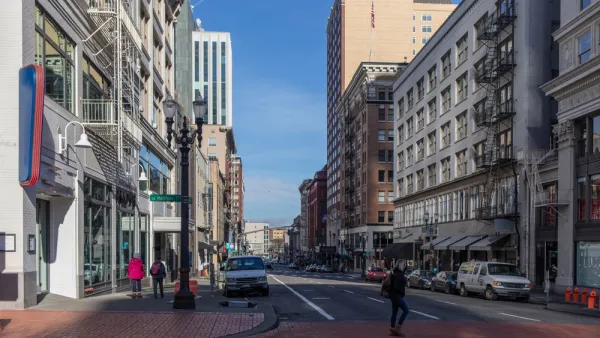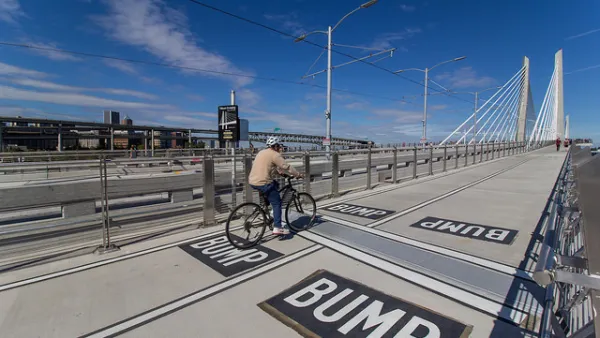Car registration statistics from Multnomah County show passenger vehicle ownership is less popular among its growing number of residents. The residents forgoing cars have done themselves a favor in more ways than one.

Michael Anderson has written a pair of posts to calculate the effect of reduced car ownership in Portland, Oregon. According to the premise of both articles, about 38,501 additional cars would be on the road in Portland if residents owned cars at the same rate as in 2007.
The first post, published in June, calculated and visualized the amount of space the reduced car ownership gains the city. For that record, "that’s everything between NE Killingsworth, Skidmore, Rodney and 16th," or "it’s the entire Foster-Powell neighborhood west of SE 73rd Avenue," among other large swaths of the city.
Andersen's newest post focuses on "the money that isn’t being spent to move, maintain, insure and replace all those cars." For each of the 38,501 cars, Andersen calculates a savings in insurance, purchase, and taxes and fees to produce a "very low estimate of direct car ownership costs per year" totaling $2,178. "So just by not owning 38,501 cars that they would have owned in 2007, Multnomah County residents are saving $83,855,178 each year to spend on other things instead," concludes Andersen.
Andersen the imagines a wish list of big ticket items that could be paid for with the money saved on reduced car-related spending, including eliminating tuition at Portland Community College, building out the entire bike plan for the city, or nearly eliminating fares on the TriMet transit system.
FULL STORY: Portland’s drop in car use frees up $138 million in our local economy every year

National Parks Layoffs Will Cause Communities to Lose Billions
Thousands of essential park workers were laid off this week, just before the busy spring break season.

Retro-silient?: America’s First “Eco-burb,” The Woodlands Turns 50
A master-planned community north of Houston offers lessons on green infrastructure and resilient design, but falls short of its founder’s lofty affordability and walkability goals.

Delivering for America Plan Will Downgrade Mail Service in at Least 49.5 Percent of Zip Codes
Republican and Democrat lawmakers criticize the plan for its disproportionate negative impact on rural communities.

Test News Post 1
This is a summary

Test News Headline 46
Test for the image on the front page.

Balancing Bombs and Butterflies: How the National Guard Protects a Rare Species
The National Guard at Fort Indiantown Gap uses GIS technology and land management strategies to balance military training with conservation efforts, ensuring the survival of the rare eastern regal fritillary butterfly.
Urban Design for Planners 1: Software Tools
This six-course series explores essential urban design concepts using open source software and equips planners with the tools they need to participate fully in the urban design process.
Planning for Universal Design
Learn the tools for implementing Universal Design in planning regulations.
EMC Planning Group, Inc.
Planetizen
Planetizen
Mpact (formerly Rail~Volution)
Great Falls Development Authority, Inc.
HUDs Office of Policy Development and Research
NYU Wagner Graduate School of Public Service





























